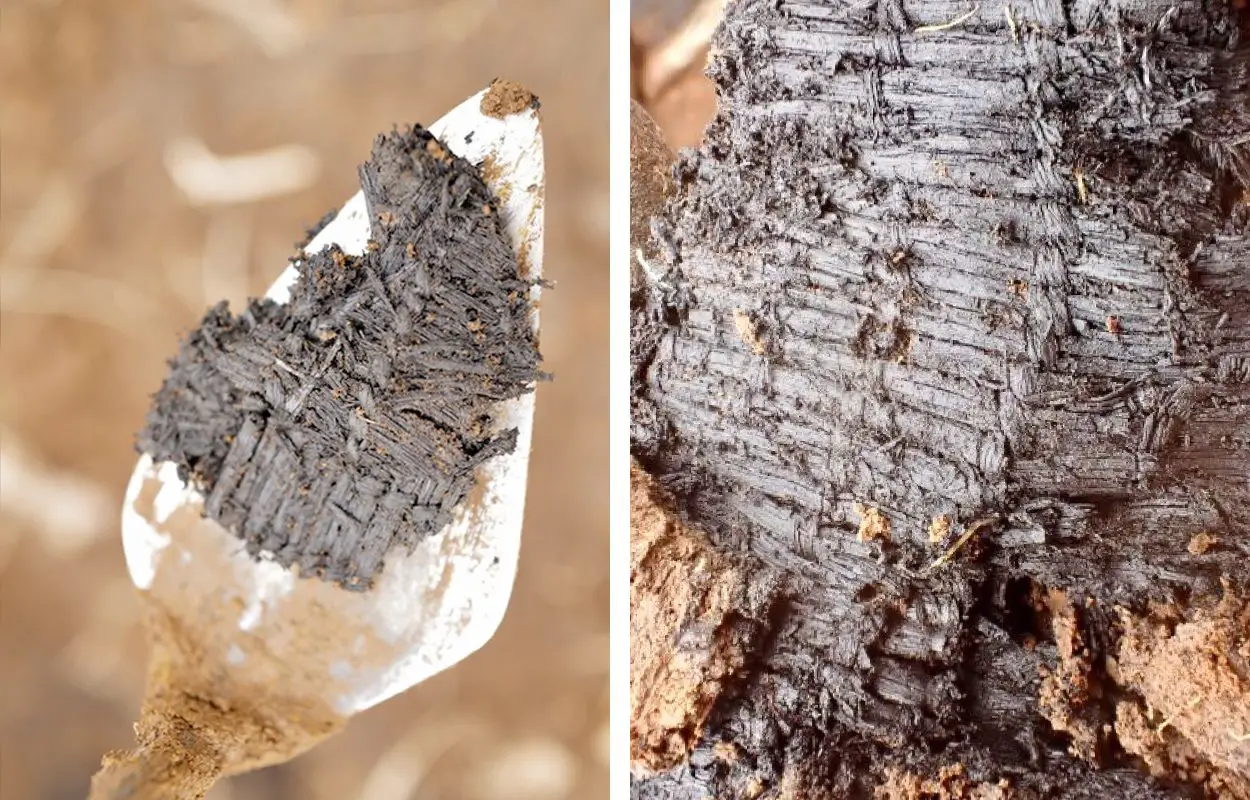In a press announcement by the Alutiiq Museum, archaeologists have uncovered fragments of ancient weavings during excavations of an ancestral sod house on Kodiak Island, Alaska.
Weaving is a long-practiced Alutiiq art, but one that is difficult to document archaeologically as fibre artifacts are fragile and rarely preserved.
The sod house was part of a Koniag Alutiiq settlement, a Alutiiq / Sugpiaq people that inhabited the coastal environments of south-central Alaska for over 7,500 years. Their ancestral homelands encompass Prince William Sound, the outer Kenai Peninsula, the Kodiak Archipelago, and the Alaska Peninsula.
The Alutiiq / Sugpiaq people share many cultural traditions in common with other coastal groups, particularly the Unangan / Aleut of the Aleutian Chain, and the Yup’ik of the Bering Sea coast. Anthropologists theorize that these cultural similarities are indicative of a shared ancient ancestry.
The woven fragments were discovered in a sod house on the shores of Karluk Lake. Patrick Saltonstall from the Alutiiq Museum, said: “We were excavating a sod house beside Karluk Lake as part of a broader study to understand how Alutiiq people used Kodiak’s interior.”
Carbon dating indicates that the structure burned and collapsed around 3,000-years-ago, with the walls collapsing into the interior and covering a portion of the floor.
“As we removed the remains of the walls, we were surprised and excited to find fragments of charred weaving. It looks like the house had grass mats on the floor. The pieces covered about a two-metre area at the back of the house, perhaps in an area for sleeping,” said Saltonstall.
A close inspection of the woven fragments shows that their makers laid down long parallel strands of grass (the warp) and then secured them with perpendicular rows of twining (the weft) spaced about an inch apart. This technique created an open weave also found in historic examples of Alutiiq grass matting. Small fragments of more complicated braiding may represent the finished edge of a mat.
“It is likely that our ancestors worked with plant fibres for millennia, from the time they arrived on Kodiak 7500 years ago,” said April Laktonen Counceller, the museum’s executive director. “It makes sense. Plants are abundant and easily harvested, and they are excellent materials for making containers, mats, and other useful items. It’s just very hard to document this practice. This wonderful find extends our knowledge of Alutiiq weaving back an additional 2400 years.”
Header Image Credit : Alutiiq Museum







